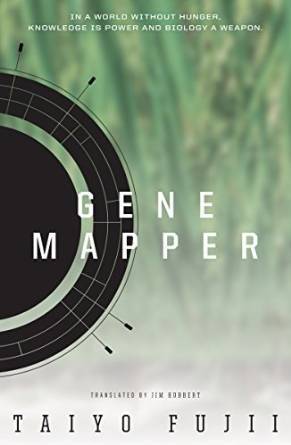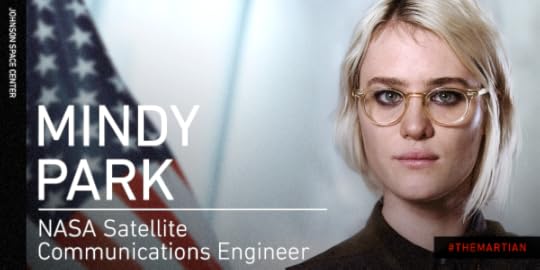Nick Mamatas's Blog, page 16
October 20, 2015
Launch Day, Sick Day
The opening story, ‘‘(.dis)’’ by Genevieve Valentine, shows just how lightly the stories are bound. It is set in Japan, featuring a pastime called haikyo that involves exploring urban ruins. The narrator discovers a corpse in the course of her excursions, but it is barely the focus of the story. Instead we get a dark and haunting exploration of the narrator’s particular character. She returns to the corpse but not to treat it as a crime scene, and the story is strange rather than fantastic. This is a great opener, both with its excellent bleak atmospherics setting the tone, and also in the sense that anything might happen here – even nothing at all. But so many things happen!
The yakuza try to take advantage of Godzilla’s statistically analyzable landfalls in ‘‘Best Interest’’ by Brian Evenson. A disastrous earthquake in Tokyo leads the countryside to rapidly become an apocalyptic dystopia in ‘‘The Long-Rumored Food Crisis’’ by Setsuko Shinoda (trans. Jim Hubbert). The vampiric minority uncovered by universal surveillance is implicated in a string of murders in the most police-procedural story here, ‘‘Vampiric Crime Investigative Unit: Tokyo Metropolitan Police Department’’ by Jyouji Hayashi (trans. Raechel Dumas). A kitsune loses her kistunebi (the object that holds her soul) in the fun and lovely ‘‘Hanami’’ by S. J. Rozan.
The choice of perspectives is equally diverse. While ‘‘Three Cups of Tea’’ (Jeff Somers) is narrated by a traditional down-on-his-luck private investigator (investigating a man who may have been killed by his sex doll), ‘‘Run!’’ by Kaori Fujino (trans. Jonathan Lloyd-Davies) is told by a fascinatingly self-introspective psychopath, and ‘‘Jigoku’’ (Naomi Hirahara) is told by a serial killer in a peculiar kind of hell. One of my favorites in the whole book is ‘‘Monologue of a Universal Transverse Mercator Projection’’ by Yumeaki Hirayama (trans Nathan A. Collins) – I have a particular fondness for physical books as narrators, as one can also find in James Morrow’s and Zoran Zivkovic’s work. This one is told by a dignified book of road maps owned by an unusual taxi driver.
‘‘The Girl Who Loved Shonen Knife’’ (Carrie Vaughn) and ‘‘The Saitama Chain Saw Massacre’’ (Hiroshi Sakurazaka, trans. Nathan A. Collins) are both narrated by teenage girls in the grips of obsession – one over music and one over a lover – and both go as far over the top as it is possible to go.
All of which is to say that Haikasoru has put out another winner of an anthology...
Neat, eh? In other news that is pretty good but insufficiently so to sooth by GI tract, Lightspeed Magazine reviewed Gene Mapper: While reading Gene Mapper, I got the sense that reading this book was like reading William Gibson’s Neuromancer for the first time: it was like an electric shock to my brain. This novel is full of vivid ideas for how the future will look, from augmented reality to genetic engineering. ...There are some obvious comparisons to other climate change/biological science fiction novels such as Paolo Bacigalupi’s The Windup Girl, but where Bacigalupi’s novel trends pessimistic, Fujii’s novel brims with technological optimism. Fujii seems to revel in the possibilities of what technology can do, and it’s an interesting book to read in a climate where entire countries are banning GMO crops and states within the United States are mandating that GMO products be labeled. Fujii’s characters are clear where they stand: what they’re working on will feed billions of people, even as they acknowledge that in the past, there were some problems along the way.
Cool, eh?
Finally, Olivia has dusted off her kiddie media review tumblr with a new post about various Cbeebies shows.
October 19, 2015
It's All About The Rice, Grasshopper
Originally posted by
 dr_phil_physics
at It's All About The Rice, GrasshopperHaikasoru is an imprint from VIZ Media specializing in bringing Japanese novels in English translation to the American market. Internet friend Nick Mamatas shepherds these. Indeed, he asked me to do a science consult on the English translation on Toh EnJoe's Self-Reference ENGINE, which was a really fun experience.
dr_phil_physics
at It's All About The Rice, GrasshopperHaikasoru is an imprint from VIZ Media specializing in bringing Japanese novels in English translation to the American market. Internet friend Nick Mamatas shepherds these. Indeed, he asked me to do a science consult on the English translation on Toh EnJoe's Self-Reference ENGINE, which was a really fun experience.Then there was the Tom Cruise blockbuster Edge of Tomorrow , which came from Haikasoru's All You Need Is Kill / Hiroshima Sakurazaka and obliquely All You Need Is Kill [Graphic Novel] / Based On The Novel by Hiroshima Sakurazaka, Adapted by Nick Mamatas, Art by Lee Ferguson(DW)
I mention all this because I was digging through my pile of Really Should Read Now / Really Should FINISH Reading Now books, when I ran across another Haikasoru title. Plus it was one of the rare instances when I won a contest. In anticipation of this summer's release of Gene Mapper, Nick was looking for "What emerging technology are you most interested in? Frightened of?" As a Physicist and SF writer, I couldn't ignore this! And he liked it. (grin)
Then there is Dr. Phil, who managed to terrify us with a future without backwards compatibility. How would you like to be a 3G phone, forever?What I wrote:
Dr. Phil says:I started right in when I got the book on 15 June 2015... and put it down about one-third of the way through because I loaded it in my day bag as we ventured south to North Carolina and back. Managed not to pull it out once, which isn't surprising. And then it's lurked on the pile glaring at me, a red warning LED slowly pulsing on its spine, mocking me. Finally I picked it up and polished it off Friday night.
06/01/2015 at 11:54 am
Human machine interfaces are coming. WiFi, USB cables — it might be like living in the world of Ghost in the Shell. But... what terrifies me is the unanticipated costs to early adopters. What if it’s addictive? What if long-term it shorts out or calcifies the neural networks? What if there’s long term scarring, irritation, infection intrusions, corrosion through the interface graft? You could die, be damaged or, after seeing the new world, be disconnected from it forever. What (about) version 1.0 adoptees? Having done one operation, you might never be able to get 2.0. What if in a world of 2.31 users, they drop support and access for 1.01 users? What kind of person would volunteer for version 0.91? 0.77? 0.3.1.3?
Would you get the plug with a 10% risk of failure? 1%? 0.1%? Would you do it in a mall kiosk (w)here it’s affordable, but has a higher failure rate? What if you get hacked?
This is way beyond PDAs, smartphones/watches/glasses. Or cochlear implants.
It’s coming. It could be wonderful. How would you know when to adopt?
Dr. Phil
Gene Mapper / Taiyo Fujii. San Francisco : Haikasoru, 2015.
Trade paperback, $14.99.
 What could possibly go wrong?
What could possibly go wrong?This is always a great way to start a SF novel, especially one about emerging technologies. And Taiyo Fujii has painted a very nice extrapolated future. Remember those annoying animated cereal boxes and other hyper advertising in the movie Minority Report? Or giant fields in Europe cut to form a SwissAir logo visible from... other airlines? All those annoying people talking about how wonderful Second Life was going to be for virtual reality? Supergrains to feed the world? GMO plants? Imagine all of that not only working, but way over-the-top working in the way we always manage to overdo everything.
What could possibly go wrong?
Gene mapper Hayashida's greatest contract job combining a megacorp's super rice with advertising visible from space is suddenly unraveling. Is this super resistant rice suddenly susceptible to pests? Are its genes spreading out beyond the fields? What the hell is going on in the giant corporate rice field in Vietnam?
Virtual reality meets augmented reality. Hayashida not only has to find out what's going on, but he has to actually travel to the site. Always worrying me in the back of the head is that he is an external private contractor -- if shit goes south, I don't think he's thinking completely about the shitstorm that the world can dump on his head.
This free-and-easy use of VR/AR in its many forms has complications -- and nicely done is that the different levels have different cost structures to them, as do the rates for connections in differing countries. Not just relying on the computers to provide on-the-fly language translations in both directions, emotions and emotional feedback can also be generated or substituted so the avatar you present to someone and the inputs you receive back are not trustworthy.
Steve Buchheit's Linkee Poo the other day included this:
The PBS special on the Brain, with David Eagleman. Some of you have heard me go on about how your vision (and perception of reality) isn't some movie playing on the back of your eyes. Instead it's a construct of your brain, a 3D holographic projection filled with emotional meaning with several extra dimensions that exist only in your head. Oh, and most of it is preprocessed information your brain pulls from memory routines, instead of reprocessing what your eyes (and other perceptions) are seeing. Just in case you ever thought I was full of shit. Well, at least about this.I mention this because this question of visual processing becomes very important in this book. How the hell do you trust when you're not sure of the reality you're being presented with? How do you figure out the truth?
And once again I find the mix of globe hopping -- real and virtual -- and trying to keep track of who is and is not the good/bad guys reminiscent of one of my favorite movies, Wim Wender's Until The End of the World. Futurists like company, I suppose. (grin)
Then there's the whole dumpster diving of the "old" Internet, which had eventually collapsed under its own weight and hacking. Somehow the collapse of computers was turned into a new beginning. But, like those poor quality baseball highlights from 1974 -- early video era tapes with shoddy images compared to modern recordings and older film -- we've lost a lot of information. Some of which might hold the answers to what's happening in Vietnam.
THEN there's the third act, where Chechov's grasshoppers from the first act, suddenly embark on a completely new direction. The reality distortion field created by both people and technology keeps us from seeing where this is going, but given the logic and completeness of Fujii's world, the ending satisfies. You can be forgiven if not understanding why the obvious retaliation to the big reveal doesn't happen, because it is effectively neutralized in one sentence. And by gosh, it works.
I suppose it's reasonable to ask if I want to live in this world? Hard to say -- there's a lot going for it. But at the same time, I'm not in control and inevitability is going to take us to the future whether we want it or not. In 1980, we had no idea we wanted an iPhone or Facebook... or Windows 10.
Bottom line -- Gene Mapper is the most original hard SF book I've read this year.
HIGHLY RECOMMENDED
Dr. Phil
Posted on Dreamwidth
Crossposted on LiveJournal
October 16, 2015
Friday Quick Fiction
Read.
October 13, 2015
"Eureka!" in GLITTERSHIP
Click here to find it: Eureka!
New in-person writing class
I had some thoughts on the subject of teaching genre fiction writing as well.
Tell your friends!
October 12, 2015
Hanzai Japan, edited by Nick Mamatas and Masumi Washington
Originally posted by
 mrissa
at Hanzai Japan, edited by Nick Mamatas and Masumi Washington
mrissa
at Hanzai Japan, edited by Nick Mamatas and Masumi WashingtonReview copy provided by Haikasoru Books. Haikasoru is also listed on the cover as the editor, but Mamatas and Washington are listed as the editors on the title page, so since that information is available I’m using it.
“Hanzai,” for those who are not aware, is basically “crime”: this is a Japanese speculative crime fiction anthology. Rather than choosing to focus on one niche of crime fiction, one niche of speculative fiction, or one way of involving Japan/Japanese-ness, it aims at being a broad-spectrum collection. It succeeds admirably at that–for those who are fond of the “hookers and meth” end of one genre or the vampire end of another, that stuff is in there. For those who are me, there’s still a lot to like. Here are some of the stories I really felt stood out.
Genevieve Valentine, “dis.” Creepy and atmospheric exploration of its crumbling setting. Vivid post-industrial details. Made my skin crawl in the best way.
Yumeaki Hirayama, “Monologue of a Universal Transverse Mercator Projection.” Translated by Nathan A. Collins. Probably my favorite story of the collection, it is, in fact, what it says on the tin: the map’s perspective. And what crimes the map is privy to–party to–the map’s desires and motivations and fears–the map’s unique voice–all of these things sum to make “Monologue of a Universal Transverse Mercator Projection” a truly unique construction. Delightful.
Brian Evenson, “Best Interest.” PowerPoint. Using a famous Japanese entity to one’s own ends. Highly entertaining.
Carrie Vaughn, “The Girl Who Loved Shonen Knife.” The voice on this story was just note-perfect. If you know the Very! Enthusiastic! Teenage! Girl! Voice! from a lot of anime, it’s that. And she’s got a cover band! And the end of the world will not stop her cover band! It is hilarious good fun with tropes and characterization.
Violet LeVoit, “The Electric Palace.” A complete 180 from the above story, this is very vivid and atmospheric, full of sensory detail in chiaroscuro.
Please consider using our link to buy Hanzai Japan from Amazon.
Originally published at Novel Gazing Redux
October 8, 2015
New Story: "The Twentieth-Century Man"
As such, "The Twentieth-Century Man" is a Carnacki, The Ghost-Finder story of sorts. At first my story had a subtitle saying it was a Carnacki story and then one saying that Carnacki was the original creation of William Hope Hodgson, as I was concerned that people would not have read Carnacki stories previously and thus not know what I was riffing on. But then I realized that almost nobody will see this story anyway. And now, the rest of the table of contents!
“Asmodeus Flight,” Siobhan Carroll
“Hiss,” Folly Blaine & Randy Henderson
“The Misplaced Body of Fitzhugh Alvey,” Jessica Corra
“The Ghost Pearl,” Howard Andrew Jones
“Fraenka Askja’s Silly Old Story,” Emily C. Skaftun
“Edge of the Unknown,” Elsa S. Henry
“The Blood on the Walls,” Eddy Webb
“Tipping Point,” Nayad Nayad A. Monroe
“T-Hex,” Jonah Buck
“The Monster,” Erika Holt
“The Book of Futures,” Wendy Nikel
“Death Wish,” Parker Goodreau
“City of Spirits,” Christopher Paul Carey
“Team 17,” T. Mike McCurley
“The Litany of Waking,” Scott Fitzgerald Gray
“Labor Costs,” Richard E. Richard Dansky
“The Twentieth-Century Man,” Nick Mamatas
“Clockwork of Sorrow,” Spencer Spencer German Ellsworth
“The Lady in the Ghastlight,” Liane Merciel
“Cuckoo,” Richard Pett
“The Shadow and the Eye,” James Lowder
“Golden Wing, Silver Eye,” Cat Hellisen
Looks like the ebook anyway will be released around the end of the month. If this is the kind of thing you like, you'll probably like this thing.
October 7, 2015
The Martian
As he enters what I always think of as an aging artist's "Prospero Years", Scott has calmed down and started creating some dreamily paced movies, sometimes to good effect (the very underrated Robin Hood and The Counselor) and sometimes to horrifying result (Prometheus). The Martian is a good fit for him, as it is a not very thrilling thriller but the theme lends itself to the sort of intense visual style his nerdy films are known for.
Matt Damon is Mark Watney, a very clever person with the bad luck to be stuck on Mars, all by his lonesome, with some stuff from a scrubbed crewed mission and four years to live through before help can come. I hate Matt Damon. I hate him the way some people hate Tom Cruise. I hate his useless potato face. Watney spends much of his time cultivating potatoes in order to stretch his food supplies and whenever Damon ate one I thought, "Oh look, Matt Damon is eating tiny Matt Damons." Also odd: when he first cuts the potatoes, a bit of the score that can only be described as "The love theme from The Martian" plays in the background. (Check a sample here.)
But Damon was all right in this one. He's only needed to be a cypher. Really, Watney isn't the protagonist of the film, he's the McGuffin. (He is the protag of the book, by the way.) The Martian does try to focus a bit on the head of NASA, who makes hard decisions that are utterly useless because everything blows up when they try stuff to save Watney, but he's no protagonist either. It's really the phalanx of nerds, some on the ground, some in space, that do all the protagging. The Martian is a movie about public works planning and expenditure that just happens to be oriented around a single individual.
As such, a lot of The Martian has all the tension of packing for a long trip, but that's actually fine. Everything is beautiful and amazing. The font choice on the plastic bottles of Grape Juice in the film is incredibly compelling. The Mindy Park character was whitewashed for the film (boo!), but holy shit, look at the glasses they picked out for her:

And those delicious untamed eyebrows!
The zero-grav scenes are mostly casual, as if the astronauts are truly expert. (One shows off for his kids via videophone, but that's about it.) The space tether wraps around the characters like the ribbon on a gift basket. It's just gorgeous.
It's also a pretty faithful adaptation. Faithful enough that if you've read and enjoyed the book, the film isn't all that compelling. I did miss my favorite part of the book—one of the characters on the main spacecraft sent back to fetch Watney explains to her folks that they shouldn't worry, she actually will survive no matter what happens. (As smallest and youngest, if anything goes wrong with the rescue mission she'll get to eat her crewmates.) But the truly dark stuff, of which there is precious little in the book anyway, is all scrubbed from the film.
The Martian could be called a commercial for NASA, or for the idea of public goods, including science education, (and the public good) in general. Odd, given that Robin Hood was basically the Tea Party agitprop version of the leftist legend. One thing about commercials—they're the slicked films made. The Martian is just that slick, even if it isn't much else.
October 5, 2015
BART follies Or overdose schmoverdose
A healthcare worker of some sort (white coat, stethoscope) on her commute stopped as I did to stand over an unconscious man this morning. She prodded him with her toe, asked if he needed help, to no response. I stuck around because sometimes people react violently to being woken up or questioned. He was still responsive after a few attempts, so I went to get the BART agent.
First, I was cut off on my way by a British tourist—and I thought Brits respected queues—who couldn't handle the BART machines, and had to buy a ticket for him and his two friends, who apparently had to waddle over with their luggage from across the concourse to watch. Then it was my turn and I explained that there was an unconscious man in the hall.
"Oh, he's just sleeping" the agent said.
"No, he isn't. He's unconscious."
"He's sleeping—"
"He is more than just sleeping," I insisted.
"Okay, I'll come check," the agent said, finally.
I walked back to the other commuter—the guy was still unresponsive—and told her that the agent was coming. We turned to see that she was back with the British tourists, helping them use their BART cards. Already late for work, I had to leave and did so when the agent turned our way and finally started sauntering up to the kid at my feet.
Hope we don't end up with a corpse in the BART in a few minutes.
October 2, 2015
HANZAI JAPAN gets a rave in LOCUS
All of which is to say that Haikasoru has put out another winner of an anthology, joining The Future is Japanese (2012) and Phantasm Japan (2014) in presenting a diverse array of voices, both Western stars (Valentine, Evenson) and Japanese authors in translation, to show just how appealing and intertwined the fiction coming out of Japan can be for the Western genre audience. Between the dark, the fantastic, the science fictional, the surreal, and the funny – there is no monolithic Japan here, just writers writing about crime, or things that might be crimes, or things that happen as the result of crimes (no matter how far stretched that definition may be) in all the different voices available to them. –Karen Burnham
Locus also included a picture of my performing a Mamatas Lift on Gene Mapper author Taiyo Fujii!

Well, you get shopping, I'll get lifting.
Nick Mamatas's Blog
- Nick Mamatas's profile
- 246 followers



